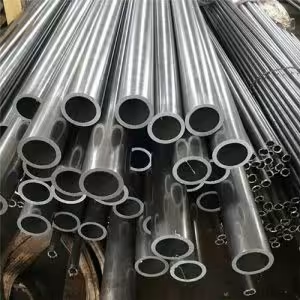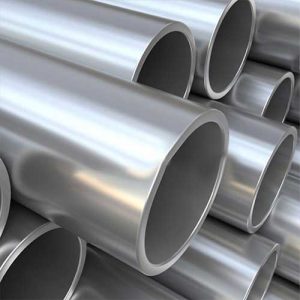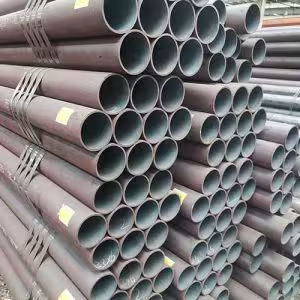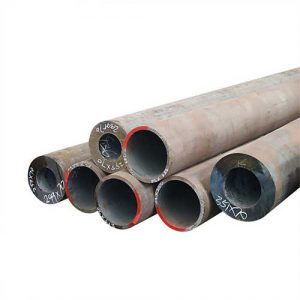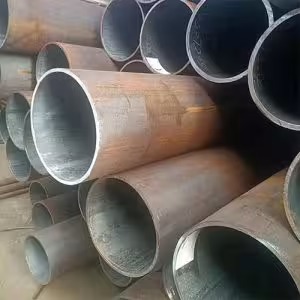Welcome to My Blog!
Before we dive into the content, I’d love for you to join me on my social media platforms where I share more insights, engage with the community, and post updates. Here’s how you can connect with me:
Facebook:https://www.facebook.com/profile.php?id=61565500692293
Now, let’s get started on our journey together. I hope you find the content here insightful, engaging, and valuable.
Table of Contents
Introduction

A seamless pipe is a type of pipe that is manufactured without any welded seams, ensuring greater strength and resistance to pressure. These pipes are used in a wide variety of applications, including oil and gas industries, construction, and power generation. Their unique manufacturing process and material properties make them highly sought after in industries requiring high pressure resistance and durability.
In this blog, we will dive deep into what seamless pipes are, how they are made, and their various uses. We will also answer common questions surrounding their production, advantages, and applications.
What Is a Seamless Pipe?
A seamless pipe is a type of pipe that is produced without any welded joints. Unlike traditional welded pipes, which have a seam where the two ends of the pipe are joined together, seamless pipes are manufactured from a single solid piece of material. This makes them much stronger, more durable, and better able to withstand extreme conditions such as high pressure and temperature fluctuations.
Seamless pipes are primarily made from materials such as carbon steel, stainless steel, and alloy steel. These materials give the pipes high tensile strength, resistance to corrosion, and overall durability, making them suitable for use in demanding environments.
How Is a Seamless Pipe Made?
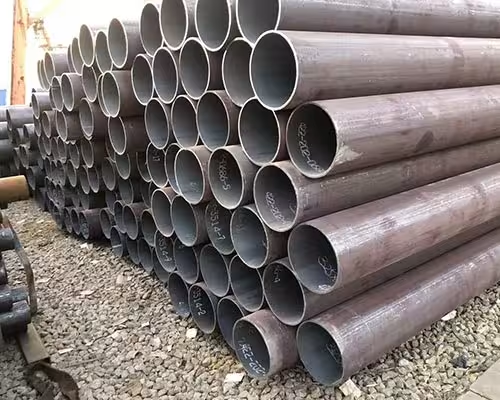
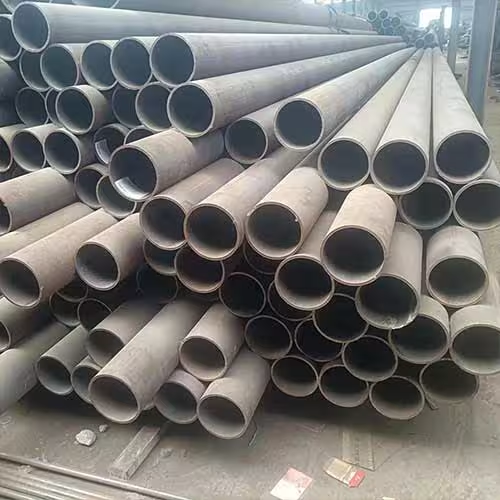
The manufacturing process of seamless pipes is intricate and involves several key steps. Below is a detailed overview of how seamless pipes are made:
Material Selection
The first step in the manufacturing process is selecting the right raw material. Carbon steel, stainless steel, and alloy steels are typically used based on the specific requirements of the application. High-quality billets are selected to ensure the final product meets the necessary standards of strength and durability.
Piercing
The next step is to pierce the billet. The billet is heated to high temperatures and then pierced with a mandrel to create a hollow tube. This is done using a rotary piercing mill, which helps shape the hollow tube without causing any weak spots or cracks in the material.
Elongating and Stretching
Once the billet has been pierced, the hollow tube undergoes elongation. This is done by passing the tube through a series of rollers, which stretch the tube into the desired length. This process also ensures the tube’s wall thickness remains uniform throughout its length.
Extrusion or Sizing
After elongation, the seamless pipe is either extruded or sized. In extrusion, the hollow tube is further shaped and stretched, while sizing involves reducing the diameter of the pipe to meet the specific dimensions required. This step may involve passing the pipe through a series of die sets to achieve the final size.
Heat Treatment
To further improve the pipe’s mechanical properties, it is subjected to heat treatment. This process involves heating the pipe to a specific temperature and then cooling it at a controlled rate. This helps relieve any stresses formed during the manufacturing process and improves the material’s hardness and strength.
Finishing
Finally, the seamless pipe undergoes finishing processes such as straightening, cutting, and surface treatment. The pipe may be subjected to processes like polishing or coating to improve its surface finish and protect it from corrosion.
Table: Types of Seamless Pipes and Their Applications
| Pipe Type | Material Used | Common Applications | Size Range | Pressure Resistance |
|---|---|---|---|---|
| Carbon Steel Seamless Pipe | Carbon Steel | Oil and gas, construction, mechanical systems | 1/8″ to 24″ | High |
| Stainless Steel Seamless Pipe | Stainless Steel | Chemical processing, food industry, medical devices | 1/4″ to 12″ | High |
| Alloy Steel Seamless Pipe | Alloy Steel | Aerospace, automotive, power plants | 1/8″ to 20″ | Very High |
| High-Pressure Seamless Pipe | Carbon/Alloy Steel | Pressure vessels, boilers, power stations | 1/8″ to 16″ | Extremely High |
Why Choose Seamless Pipes?
Seamless pipes offer several distinct advantages over their welded counterparts. These benefits make seamless pipes highly valuable in industries where durability, safety, and reliability are paramount.
Strength and Durability
The absence of welded seams gives seamless pipes superior strength, making them more resistant to high pressure and stress. This is why seamless pipes are often used in critical applications such as oil and gas pipelines, power plants, and chemical reactors.
Corrosion Resistance
Seamless pipes, especially those made from stainless steel, offer enhanced corrosion resistance. This makes them ideal for applications in corrosive environments, such as the chemical industry or offshore drilling.
No Risk of Seam Failure
Since seamless pipes do not have welded seams, they are less prone to failure at the seam under pressure, which can occur in welded pipes. This makes them a safer option in high-stress applications.
High Temperature Resistance
Seamless pipes are well-suited for high-temperature environments due to their robust construction and material properties. These pipes can withstand thermal stress and are commonly used in industries such as power generation and petrochemical refining.
Versatility
Seamless pipes are available in a wide range of sizes and materials, allowing them to be used in a variety of industries. Whether it’s a small, low-pressure application or a large, high-pressure system, there’s a seamless pipe suitable for the task.
Applications of Seamless Pipes
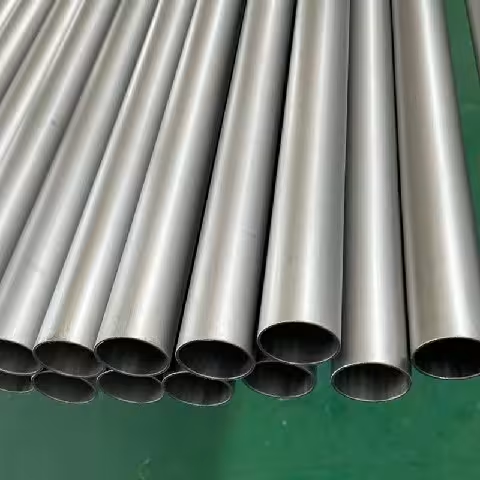
Seamless pipes are widely used in several industries due to their superior strength and reliability. Below are some common applications:
Oil and Gas Industry
Seamless pipes are commonly used in the oil and gas industry for transporting oil, gas, and water under high pressure. Their resistance to high temperatures and pressures makes them ideal for drilling and exploration operations.
Construction
In the construction industry, seamless pipes are used in structural applications such as support beams, columns, and bridges. The high tensile strength of seamless pipes allows them to handle large loads and stresses.
Automotive Industry
Seamless pipes are often used in the automotive industry for making parts that need to withstand high levels of pressure and temperature, such as exhaust systems, fuel lines, and hydraulic components.
Power Generation
Seamless pipes are used extensively in power plants for the transmission of fluids, steam, and gases under extreme conditions. They are used in boilers, steam turbines, and pressure vessels due to their ability to withstand high pressure and temperature.
Aerospace
In aerospace applications, seamless pipes are used to create lightweight but durable components for aircraft, such as structural supports and fuel lines.
Conclusion
Seamless pipes offer a wide range of advantages over welded pipes, including superior strength, durability, and resistance to extreme conditions. Their manufacturing process ensures that they are free of weaknesses that can arise from welded seams, making them an ideal choice for demanding applications in industries such as oil and gas, construction, aerospace, and power generation.
If you are looking for reliable, high-quality piping solutions, seamless pipes are an excellent choice. Their ability to withstand high pressure, extreme temperatures, and corrosive environments makes them indispensable in a variety of industrial applications.
FAQ
What is the difference between seamless and welded pipes?
Seamless pipes are manufactured from a solid billet and do not have a welded seam, making them stronger and more resistant to high pressure. Welded pipes, on the other hand, are made by welding two ends of a pipe together, which can create weak points that are more prone to failure.
What materials are used to make seamless pipes?
Seamless pipes are typically made from materials such as carbon steel, stainless steel, and alloy steel, depending on the specific application and requirements of the pipe.
What industries use seamless pipes?
Seamless pipes are used in a variety of industries, including oil and gas, aerospace, automotive, construction, and power generation, due to their strength and ability to withstand extreme conditions.
Are seamless pipes more expensive than welded pipes?
Yes, seamless pipes tend to be more expensive than welded pipes due to the more complex manufacturing process and the higher material strength they offer.
What are the benefits of using seamless pipes in high-pressure applications?
Seamless pipes have no welded seams, which makes them less prone to failure under pressure. They can withstand higher pressures and extreme temperatures, making them ideal for high-pressure applications like oil and gas pipelines and power plants.



